Does it Matter?

Below, in no particular order, the student responses to the following two question:
- Does the history of the old and new European women’s movement matter today?
- What are the main Issues of gender equality today?
Eric Schmidt: Understanding the past will lead to a better outcome in the future. In the case of the old and new European women’s movement, individual women came together to change the perception of 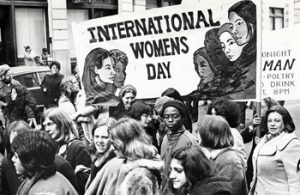 a woman’s supposed role in society. Using ideas of the New Woman, Republican Motherhood and the socialist ideas about protection for women workers, women have gradually increased their agency in terms of establishing what equality actually means. When studying a subject on feminism, it is important to note the varying degree of strategies and perspectives of women. While men feared that women would upend societal norms by gaining the vote, the truth of the matter is that women tended to have nearly the same political views as their spouse. This speaks volumes to the unfounded fear of men that led them to suppress women. As basic rights for women are secured, a deeper conversation surrounding the issues facing women can come to fruition. However, male dominated societies often times decide what is acceptable to discuss because of the disproportionate allotment of power.
a woman’s supposed role in society. Using ideas of the New Woman, Republican Motherhood and the socialist ideas about protection for women workers, women have gradually increased their agency in terms of establishing what equality actually means. When studying a subject on feminism, it is important to note the varying degree of strategies and perspectives of women. While men feared that women would upend societal norms by gaining the vote, the truth of the matter is that women tended to have nearly the same political views as their spouse. This speaks volumes to the unfounded fear of men that led them to suppress women. As basic rights for women are secured, a deeper conversation surrounding the issues facing women can come to fruition. However, male dominated societies often times decide what is acceptable to discuss because of the disproportionate allotment of power.
While women have achieved much greater levels of income equality, there is still much work to be done. Various estimates still put women making about 75-80% of every man dollar. This issue is connected but distinctly different than the kind of jobs that are offered towards women. For example, tech industries typically hire men over women. C.E.O.s and other positions of power are drastically in favor of men, though there has been some progress. Thinking past issues of finance, the MeToo movement is an excellent example of how women managed to use current technology to address the problem sexual harassment in a variety of settings. In some states in the U.S., there has been a regression in providing women with the services that are her right to control. Specifically, Texas closed almost all abortion clinics, leaving women to travel multiple hours to have an abortion. By looking at the past, we can see from the history of European women that abortions occurred frequently and led to extremely dangerous behavior for women. The issues of equality are intertwined with the issues of power.
Bailey Aldridge: This history of the old and new European women’s movement matters today.  These movements were integral in the fight for women’s rights. They are important to women’s history and to history in general. A lot of times history focuses on men and their accomplishments, but studying the old and new European women’s movements shows women have done a lot of important things. It also shows the fight for women’s rights began a long time ago. Fighting for equality isn’t a new thing, and it’s important to study where it began.
These movements were integral in the fight for women’s rights. They are important to women’s history and to history in general. A lot of times history focuses on men and their accomplishments, but studying the old and new European women’s movements shows women have done a lot of important things. It also shows the fight for women’s rights began a long time ago. Fighting for equality isn’t a new thing, and it’s important to study where it began.
I think the main issues of gender equality today are equal pay and health care disparities. Women still make less income than men do. This is a problem that creates other inequalities. Health care is also one of the main issues of gender equality today. Women’s health care is not as valued as men’s health care because men are still mostly in charge and are delegating what is researched on and what is prioritized in the health care world. Women in developed countries with advanced health care and technology still die from pregnancy or child birth-related complications more often than they should. This is something that can and should be easily prevented. Women’s access to birth control, which is something many women need to take for reasons other than pregnancy prevention, has also been threatened.
Emma Haseley: The history of the old and new European women’s movements matter today for many important reasons. First of all, they serve as a marker of progress or lack thereof on issues relevant to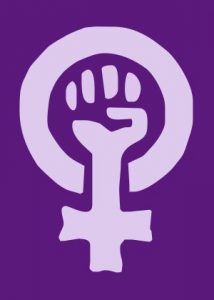 women. As the goals of women’s movements change over time or remain the same, historians can see how the societies they are a product of have also changed or not. This is useful in modern times because people often forget how far women have come and how long it has taken them to get to this point in history, in terms of rights and equality. Especially to those who say that women are completely equal today and that there is no need for women’s rights advocacy or for feminism, these histories serve as evidence that true equality has never existed and that women must constantly advocate for their rights and equality. History is not a linear process; there is progress and then there are setbacks. Especially for women and other minority and historically oppressed groups of people, rights are precarious. Depending on the social or political climate, rights can be easily taken away or ignored. For example, women in Soviet Russia went from having the right to abortion (1920), to not having it (1936), to having it again on restricted terms (1955). Old and new European women’s movements also provide modern women’s movements a platform to build off of. Women’s organizations today can look to the past and see what strategies have been more successful than others and what issues were ignored or not emphasized enough. The legacy of these movements and the perseverance of women in worse conditions than the modern woman is what provides the motivation for women’s movements of today to keep fighting.
women. As the goals of women’s movements change over time or remain the same, historians can see how the societies they are a product of have also changed or not. This is useful in modern times because people often forget how far women have come and how long it has taken them to get to this point in history, in terms of rights and equality. Especially to those who say that women are completely equal today and that there is no need for women’s rights advocacy or for feminism, these histories serve as evidence that true equality has never existed and that women must constantly advocate for their rights and equality. History is not a linear process; there is progress and then there are setbacks. Especially for women and other minority and historically oppressed groups of people, rights are precarious. Depending on the social or political climate, rights can be easily taken away or ignored. For example, women in Soviet Russia went from having the right to abortion (1920), to not having it (1936), to having it again on restricted terms (1955). Old and new European women’s movements also provide modern women’s movements a platform to build off of. Women’s organizations today can look to the past and see what strategies have been more successful than others and what issues were ignored or not emphasized enough. The legacy of these movements and the perseverance of women in worse conditions than the modern woman is what provides the motivation for women’s movements of today to keep fighting.
While women over the world are mostly considered equal citizens to men under law, the real experiences of women worldwide are that they are not treated as equal. While there are many issues related to gender equality today, some of the ones that stand out to me personally are education, sexual assault, and labor. Girls and women all over the world lack equal access to education for many reasons, but most of them stemming from the fact that a female’s intellect is not as highly valued as a male’s. Sexual assault, rape, and harrasment are problems of equality because they are systemic problems that contribute to the internalization of subordination for women and the expression of dominance for men. In terms of labor and employment, women do not have equal opportunities to get and excel in all jobs, even if they are as qualified as men up for the same job. One of the biggest issues of gender equality today is the disparities in level of equality experienced by women of different races, ethnicities, socio-economic levels, and sexual orientations. Certain groups of women are much less equal than other groups, and there needs to be a greater focus on bringing all of these women up to the level of equality that other women experience.
Shana Loudermelk: The history of European women’s movements certainly matters today. 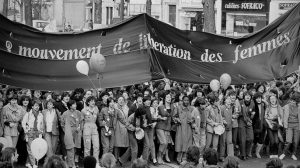 Progress is never sudden and the women who were involved in fighting for such basic rights as legal identity independent from men laid the foundation for more progress to occur. We can never devalue the history that these women played crucial roles in. They set examples and fought for rights that we see as basic, but that they did not have at the time. The movements also help activists today see the most successful methods for campaigning. Understanding the arguments and perspectives surrounding major women’s issues throughout history is integral to the understanding of how to change societal mindsets today by knowing where they stem from.
Progress is never sudden and the women who were involved in fighting for such basic rights as legal identity independent from men laid the foundation for more progress to occur. We can never devalue the history that these women played crucial roles in. They set examples and fought for rights that we see as basic, but that they did not have at the time. The movements also help activists today see the most successful methods for campaigning. Understanding the arguments and perspectives surrounding major women’s issues throughout history is integral to the understanding of how to change societal mindsets today by knowing where they stem from.
The main women’s equality issues today center on equal pay and ideas surrounding childbearing. Women are undervalued in the workforce because they have to take maternity leaves. Oftentimes these maternity leaves are not long enough or put them in positions where they cannot progress in their career or company. There is still the issue of equal pay and debates on access to birth control. Another major issue still seen today is the gendered division of labor. There are a much higher proportion of men holding executive positions, holding political positions, and working in science or math fields. Women are much more likely than men to be nurses, secretaries, and lower level teachers. Yet, in university settings, men are much more likely to be professors, which highlights how the gender hierarchy is still very present in society.
Carina Ochoa: Women have become great contributors to society, but it is important not to forget that they were once limited in all dimensions, politically and socially. Despite their restrictions, they steadily 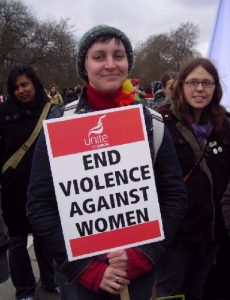 rose above the public’s views and obtained their rights. In their determination to gain rights, they used varying methods, peaceful demonstrations as well as militant tactics. All in an attempt to make the common people pay attention to their needs. While they were met with much resistance, they also gained many supporters. Despite the limitations in technology and social media, women were able to organize and spread their agenda in many different countries. To gain their rights, women had to be strong-willed and determined, and we can only learn from them if we look into their past.
rose above the public’s views and obtained their rights. In their determination to gain rights, they used varying methods, peaceful demonstrations as well as militant tactics. All in an attempt to make the common people pay attention to their needs. While they were met with much resistance, they also gained many supporters. Despite the limitations in technology and social media, women were able to organize and spread their agenda in many different countries. To gain their rights, women had to be strong-willed and determined, and we can only learn from them if we look into their past.
Nowadays, we see women taking on more roles in society, but they have not truly been equalized to their male counterparts. As a Women’s and Gender Studies major, I always have to answer how women’s issues are still relevant today as well as face the scrutiny that comes with announcing my major. Many people in society falsely believe that due to their gain in women’s suffrage and their increasing contributions in society that they are equal in all terms. However, the most common problem that women still face is the gender pay gap. On average, women win 75 cents to a man’s dollar. To add to this, the problems of women of color continue to be neglected. It is important to recognize that a woman’s race and ethnicity are strong forces that contribute to her oppressions and inequality within society. I would even say that our inability as a society to vote and elect a female president shows that as a whole, society still has to come to terms with the idea of a powerful, intelligent woman.
Olivia Porter: I believe the history of women is important to remember as they were often times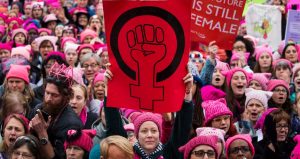 historically ignored. According to George Santayana, a Spanish philosopher, “those who cannot remember the past are condemned to repeat it”. It is specifically important for women to remember the injustices committed against their own sex. Especially with access to birth control and safe access to abortions, it is important to remember why we have access to these resources in the first place. Women should continue making strides in fields such as science and education in addition to other fields of work in which women had to fight to be recognized in. If women choose not to remember, then women may once again be living in a man’s world.
historically ignored. According to George Santayana, a Spanish philosopher, “those who cannot remember the past are condemned to repeat it”. It is specifically important for women to remember the injustices committed against their own sex. Especially with access to birth control and safe access to abortions, it is important to remember why we have access to these resources in the first place. Women should continue making strides in fields such as science and education in addition to other fields of work in which women had to fight to be recognized in. If women choose not to remember, then women may once again be living in a man’s world.
The main issues of gender equality today are especially prevalent in the work force. With women making 76 cents per every dollar a man makes, women still have not been able to achieve equal pay. There are also far less women CEOs at the head of Fortune 500 companies, with women only representing 5% of CEOs in comparison to their male counterparts which make up 91%. These women that try to work their way up in the companies are often belittled and are told that women are too emotional to handle such stressful positions. The same criticisms are applied to women in politics. When Ruth Bader Ginsburg, a U.S. Supreme Court judge, was asked when there would be enough women in the Supreme court, she answered nine. Nine men supreme court judges are considered normal, while nine women judges were considered to be shocking. This is just one example of it being supposedly bizarre to see a work space being dominated by women. Working women have to achieve twice as much in order to be recognized. Until women are able to take a seat at the head of the table without being questioned, women will continue to face issues of inequality.
Kate Nicholson: The history of the old and new European women’s movement matters today because they contribute to the understanding of the changes and continuations within women’s history. In the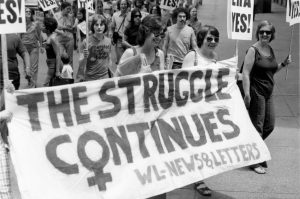 entry with Simone de Beauvoir’s interview, it is clear that the Women’s movement in France has inspired how feminist movements operate today. The objectives of the women’s movement are similar to the ones that are present today. The women’s movement in France during 1968 brought about change in the way that women broke away from male-dominated organizations and became active participants. The document emphasizes how women must work individually and collectively to achieve equality. As an individual, de Beauvoir recommended that women work and remain unmarried in order to achieve independence. She also urged women to help each other recognize their position within society and to take action into their own hands.
entry with Simone de Beauvoir’s interview, it is clear that the Women’s movement in France has inspired how feminist movements operate today. The objectives of the women’s movement are similar to the ones that are present today. The women’s movement in France during 1968 brought about change in the way that women broke away from male-dominated organizations and became active participants. The document emphasizes how women must work individually and collectively to achieve equality. As an individual, de Beauvoir recommended that women work and remain unmarried in order to achieve independence. She also urged women to help each other recognize their position within society and to take action into their own hands.
Some of the main issues of gender equality today are equal pay and discrimination of women in the force force. Although women have made progress in regards to gaining the right to vote and more educational opportunities, it is still evident within the political, economic, and private world that men still have the upper hand.
Jessica Thompson: The history of the old and new European women’s movement still matters  today for a multitude of reasons. Recognizing the ways in which women gained, lost, and regained rights in society is essential to understanding how we protect and advocate for our rights today. The contributions of women in the past movements should be remembered for the risks they took in taking the contrary opinion and working towards rights we often take for granted. Looking at history can also show contemporary activists what measures and argumentation were effective an ineffective in the past. Ultimately, we owe the rights we consider so basic like the right to vote and to be autonomous within a marriage to the women’s rights activists of the past. To forget or lose consciousness of their contributions will only leave us susceptible to losing those rights.
today for a multitude of reasons. Recognizing the ways in which women gained, lost, and regained rights in society is essential to understanding how we protect and advocate for our rights today. The contributions of women in the past movements should be remembered for the risks they took in taking the contrary opinion and working towards rights we often take for granted. Looking at history can also show contemporary activists what measures and argumentation were effective an ineffective in the past. Ultimately, we owe the rights we consider so basic like the right to vote and to be autonomous within a marriage to the women’s rights activists of the past. To forget or lose consciousness of their contributions will only leave us susceptible to losing those rights.
While there have been great strides in improving gender equity in our society, there are still remnants within our culture that place women subordinate to men politically, socially, and economically. Most often, modern feminists and egalitarians point to the lack of female political leadership and the gendered wage gap as examples of continuing gender inequality. I certainly believe those to be key issues, I also believe a really important issue of gender in modern society lies in the social inequality between women and men. Social roles within society are still very much gendered, often placing women as second, or an accessory to men. We’ve recently seen this dynamic challenged with movements like MeToo, but I think it is clear that there is still much more to be done for women to be socially equal to men as authority figures, friends, and otherwise. Additionally, we still see women of color and LGBTQ identifying women marginalized at a greater rate than other groups of women. Giving these demographics more attention when discussing gender equality would allow for more equality within society overall.
Kaitlyn Capps: I believe that understanding the history of the old and new European women’s movements is crucial to the success of future women’s movements. Looking at the past can help future 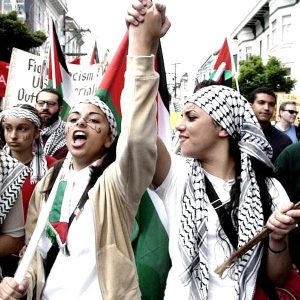 leaders gain a better understanding of what past movements failed and succeeded in doing. Past movements also serve as historical markers. Both women and men forget what life was like for women before these movements. Looking back at both the old and new women’s movements serves as a reminder to the world how far women have come. A consciousness of the efforts made by the female leaders of past movements can also inspire women or men to become leaders of future movements. Additionally, studying these movements will bring awareness to the fact that the women’s movements did not achieve all they wanted to and that there is more work to be done! There are still many ways in which women and men can improve gender inequality in society.
leaders gain a better understanding of what past movements failed and succeeded in doing. Past movements also serve as historical markers. Both women and men forget what life was like for women before these movements. Looking back at both the old and new women’s movements serves as a reminder to the world how far women have come. A consciousness of the efforts made by the female leaders of past movements can also inspire women or men to become leaders of future movements. Additionally, studying these movements will bring awareness to the fact that the women’s movements did not achieve all they wanted to and that there is more work to be done! There are still many ways in which women and men can improve gender inequality in society.
Overall, women have made a great deal of progress in the last 250 years. However, there are still many issues surrounding gender equality today. Considering women are half of the total world population, these issues need to be addressed now. Though women have made significant gains in the workforce income inequality between male and female workers is still a major issue. As of 2016, there was a 20% pay gap between male and female full-time workers in the United States. Additionally, the gendered division of labor is also a pressing issue. Women have historically taken the jobs that society deemed were areas of “women’s work,” such as jobs that include working with children, working with textiles or cooking. The majority of women were not encouraged to pursue careers in science, technology, engineering or mathematics. Therefore, science and math-based industries have become male-dominated.
Lauren Overton: I strongly believe that the history of the European women’s movement does  matter today. I think that the merits of studying history lie in the adaptability to the present. For this reason in particular I believe that it is important to understand where the struggles we see today arise from and to learn from the decisions that led to different forms of gender inequity. For me, the most elucidating aspect was watching how the wage gap emerged historically in Europe. I believe that studying this material
matter today. I think that the merits of studying history lie in the adaptability to the present. For this reason in particular I believe that it is important to understand where the struggles we see today arise from and to learn from the decisions that led to different forms of gender inequity. For me, the most elucidating aspect was watching how the wage gap emerged historically in Europe. I believe that studying this material
It gives voices to women of the past. In every history class I’ve ever taken except for this one women have almost always been confined to a footnote or to a tiny box in a chart. In history women of merit are expected to be even more exceptional despite their circumstances. Women’s history is a part of history and women’s voices should be reincorporated for the benefit of all that study it.
I think the main issues in gender equality today are the wage gap, domestic violence (particularly toward women and trans individuals), ability to access free or affordable birth control, general agency to control one’s own reproductive rights. Gender bias and stereotyping are also important issues.
Rosa Bestmann: The question of historical relevance in relation to our present realties is always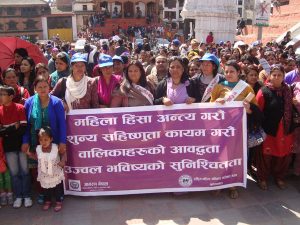 something of which should be regarded with extreme regard. Indubitably, one cannot deny the ways in which history has shaped and formulated our present. To argue that the European women’s movement does not matter in today’s age, would be the equivalent of discrediting the hundreds of years of activism and lives which have been lost in the struggle towards equality and emancipation for women. Our currently realities, especially that of women, has been shaped by the histories of the women who came before us. Nearly every interaction we have within our personal spheres can be attributed to an underlying societal understanding of such. This remains prevantley true when it comes to the ways in which the history of the old and new European women’s movement had formulated our interactions and understandings of the present. Whether it be in regards to the gender pay gap, institutionalized discrimination, sexual assault, societal expectation or the demand for female labor, we continually see correlation between these sexist ideals within present society, and their continuous presence within nearly every facet of history. In order to understand the ways in which these discriminatory notions interpellate our present, it is of utmost importance, to first understand the past.
something of which should be regarded with extreme regard. Indubitably, one cannot deny the ways in which history has shaped and formulated our present. To argue that the European women’s movement does not matter in today’s age, would be the equivalent of discrediting the hundreds of years of activism and lives which have been lost in the struggle towards equality and emancipation for women. Our currently realities, especially that of women, has been shaped by the histories of the women who came before us. Nearly every interaction we have within our personal spheres can be attributed to an underlying societal understanding of such. This remains prevantley true when it comes to the ways in which the history of the old and new European women’s movement had formulated our interactions and understandings of the present. Whether it be in regards to the gender pay gap, institutionalized discrimination, sexual assault, societal expectation or the demand for female labor, we continually see correlation between these sexist ideals within present society, and their continuous presence within nearly every facet of history. In order to understand the ways in which these discriminatory notions interpellate our present, it is of utmost importance, to first understand the past.
In terms of the main issues of gender equality in today’s day and age, one could argue remain quite prevalent to those of the eighteenth century. However, as time progresses, these issues too evolve and manifest themselves in a variety of ways within today’s society. One of the main issues of gender equality today is gender discrimination, from an economic viewpoint. Gender discrimination is a major impediment when it comes to the growth of countries, as it prevents countries from reaching their maximum productivity potential. According to the Pew Research Center, although women constitute 40% of the global workforce, those who do work are generally paid much below that of male workers, despite being equally capable and skilled. Furthermore, their status and promotion is limited to middle or below ranks, they are laid off pre-retirement age more frequently than men, they have limited educational opportunity, and they typically run smaller companies with less profitable enterprises. Due to these obvious restrictions, many countries experience loss of productivity that amounts to 25% due to gender discrimination. This gendered discrimination has also led to male superiority over female bodies, through domestic abuse, emotional violence, sex exploitation, unfair treatment in career, and inferior social status. Gender discrimination is costly to nations across the globe and forces women to suffer the severe emotional and economic repercussions. In order to refute these notions, it becomes of utmost importance to systematically acknowledge these issues, and furthermore, take proactive measures to abolish them.
Rachel Arenas: The European women’s movements are worth studying to see both how far society has come in the way of gender expectations and equality, as well as to study the problems that 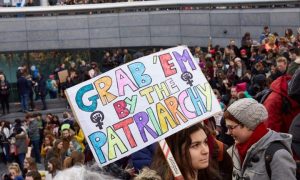 remain. The work of pioneers like Simone de Beauvoir and Emmeline Pankhurst was not done in vain, and their work should and the greater opportunities they earned for women today should be appreciated aptly. Conversely, looking at these histories is crucial to understanding the roots of today’s problems in gender equality.
remain. The work of pioneers like Simone de Beauvoir and Emmeline Pankhurst was not done in vain, and their work should and the greater opportunities they earned for women today should be appreciated aptly. Conversely, looking at these histories is crucial to understanding the roots of today’s problems in gender equality.
The main issues of gender equality today are the wage gap and micro-aggressions. No matter how much education or experience women have, their male counterparts in the workplace continue to earn more money. This issue conveys the societal belief that women’s work is not worth as much as men’s, or they are not doing as difficult work. Micro-aggressions are subtleties that can include things people say or expectations that reveal discriminations against a certain group. In the workplace, these can include men asking their female equals to fulfill a ‘traditionally female’ task like secretarial duties or a man explaining an obvious concept or something it is assumed a woman would not understand. Micro-aggressions permeate schools as well; as early as middle-school boys can be expected to take the lead on projects or speak for the others in a group, which undermines girls’ confidence in themselves. These subtleties have wide-reaching effects: those that appear in schools coincide with the fact that there has yet to be a female president of the United States, and the small proportion of women to men that hold governmental or leadership positions in general. Micro-aggressions, small as they may seem, are a key part of societal inequalities between the genders.
Kayla Travis: The history of the old and new European’s movement matter today. It is important to study the history of both the old and new European women’s movements because it shows the progress made towards gender equality, however, at the same time, it also shows that the new European women’s movements are still fighting for some of the same things that the old women’s movements fought for. Studying both movements shows us in retrospect how little the fight for the gender equality has come and that it is still a constant struggle today. These movements also show the conditions that society imposes on women and how reluctant society is to change its viewpoint. The old and new European women’s movement matters today because of the continued struggle women face for equality and they help us to understand societal views of women throughout history.
study the history of both the old and new European women’s movements because it shows the progress made towards gender equality, however, at the same time, it also shows that the new European women’s movements are still fighting for some of the same things that the old women’s movements fought for. Studying both movements shows us in retrospect how little the fight for the gender equality has come and that it is still a constant struggle today. These movements also show the conditions that society imposes on women and how reluctant society is to change its viewpoint. The old and new European women’s movement matters today because of the continued struggle women face for equality and they help us to understand societal views of women throughout history.
Some of the main issues of gender equality today are the wage gap and the limited opportunities in the work force. The gender wage gap shows that women are paid less then men for doing the same job and the same amount of work. There are also limited opportunities in the work force for women because of the gender division of labor and lack of access to higher education.
Allison Sedberry: The women’s movements in Europe, that have shaped women’s lives today in nearly every way, will continue to be built upon by coming generations of feminists. The groundwork laid prior is what facilitates the continuation of women’s rights whether they be economic, political, or social. Reading about the work women did to get us to the present day is shocking and inspiring. The main issues of feminism today continue to be economic inequality, which is the driving force for many other aspects of life, as well as the sexual harrassment and abuse of women, which stems from a greater issue of social inequality and subsequent objectification of women by men. There are certainly a lot of issues to be worked through but the current progress would not be possible without the work of the women’s movement and the women’s liberation movement that hasn’t gotten us so much closer to gender equality.
Anne Nachman: The short answer is yes, the history of the old and new European women’s movements definitely matter today. They matter because they help us to understand modern society, and 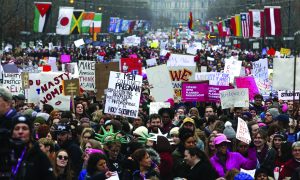 because they illustrate how people can implement change in their society. As a young woman in today’s world, and as a person who identifies as feminist, I find myself constantly jumping between being disgusted by the the injustice that persists in the modern world, and being impressed with the work of older feminists. The truth is that injustice and inequality exists all over the world in all aspects of society, from culture that justifies or forgives sexual assault, to the wage gap, the pink tax, lack of reproductive health care and maternity leave, lack of women in STEM, or in upper level administrative roles. Our cultural biases are too deeply ingrained in our understanding of ourselves and our communities for them to be reversed without the decisive, and committed work of women and allies for gender equality. One of the most interesting parts of studying Women and Gender studies for me has been reading the writings of older generations and realizing that though I agreed with their desire for a better situation for women, I frequently disagreed with their methods or logic behind the need for change. Studying the old and new European women’s movements has helped me personally to recognize biases I didn’t realize I had, and to think critically about my specific reasons for wanting change, and how that change can be achieved. I continue to be inspired and challenged by the words of European feminists, as they show us the importance of asserting our opinions firmly, gracefully, and persistently in order to make things better for women of future generations.
because they illustrate how people can implement change in their society. As a young woman in today’s world, and as a person who identifies as feminist, I find myself constantly jumping between being disgusted by the the injustice that persists in the modern world, and being impressed with the work of older feminists. The truth is that injustice and inequality exists all over the world in all aspects of society, from culture that justifies or forgives sexual assault, to the wage gap, the pink tax, lack of reproductive health care and maternity leave, lack of women in STEM, or in upper level administrative roles. Our cultural biases are too deeply ingrained in our understanding of ourselves and our communities for them to be reversed without the decisive, and committed work of women and allies for gender equality. One of the most interesting parts of studying Women and Gender studies for me has been reading the writings of older generations and realizing that though I agreed with their desire for a better situation for women, I frequently disagreed with their methods or logic behind the need for change. Studying the old and new European women’s movements has helped me personally to recognize biases I didn’t realize I had, and to think critically about my specific reasons for wanting change, and how that change can be achieved. I continue to be inspired and challenged by the words of European feminists, as they show us the importance of asserting our opinions firmly, gracefully, and persistently in order to make things better for women of future generations.
Leeza Mason: This history of the old and new European women’s movement definitely matters today. Many of the women in the past set the foundation and were pioneers of feminism and the women’s movements that are active in today’s world. While some of the problems that women faced in the eighteenth, nineteenth, and 20thcentury may seem inapplicable to today’s modern 21stcentury, there are some issues that women in the past faced that are still issues for women in the present. In order to understand the deeply rooted gender order that governs our society, one must look at the history of the old and new European women’s movement. In order to understand the present day, one has to look back in the past to understand the history which has led up to today’s social, political, and cultural structure. It will also assist the women’s movement in organizing their actions and agency, which will lead to the advancement of the women’s movement.
movements that are active in today’s world. While some of the problems that women faced in the eighteenth, nineteenth, and 20thcentury may seem inapplicable to today’s modern 21stcentury, there are some issues that women in the past faced that are still issues for women in the present. In order to understand the deeply rooted gender order that governs our society, one must look at the history of the old and new European women’s movement. In order to understand the present day, one has to look back in the past to understand the history which has led up to today’s social, political, and cultural structure. It will also assist the women’s movement in organizing their actions and agency, which will lead to the advancement of the women’s movement.
Some of the main issues of gender equality today are concentrated in the workforce. Sexual harassment, gender labor division, and the gender wage gap are three main issues that remain to be problems in the world. In the United States, women are paid only 80% of what men earn, which is a 20% difference. Similarly, in European countries, the wage gap is 16.2% (2016). As the Me-Too movement continues to raise awareness to the sexual harassment that is occurring in everyday workspaces, celebrities whom were sexually exploited by men in power also began to tell their story. The gender division in different professions remains to be an issue of gender equality today. There are limited job opportunities for women: these professions include politicians, STEM careers, and CEOs.
Rosie Tran: The European women’s movement throughout the years have challenged the norms on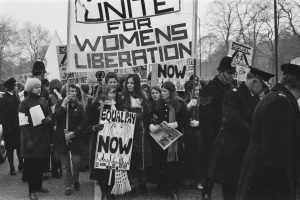 what it means to be a woman and what it means to be female. Our course began with the French Revolution where middle-class women vehemently protested against their unequal treatment and the March on Versailles, an act of militant feminism, was the rioting over bread shortages and prices. These women forcibly told society that they were more than simple housewives and mothers — they were, and still are, crucial members of our society. Olympe de Gouges wrote The Declaration of the Rights of Woman and the Female Citizen in reaction to the gross exclusion of women from the French Constitution that was developed after the Revolution. As the course comes to a close and we have spent much time learning about the actions of women during the First and Second World War, it is again highlighted that women are a force to be reckoned with as leaders such as Sophie Scholl protested against the Third Reich or the Special Operatives Executives where many female spies sacrificed their lives in hopes of peace. This history matters because this history showcases that women are more than capable of being strong and powerful. That we can find leaders in women as well. It is a history that has constantly defied stereotypes set for women. With this comes the capacity to advocate for not just the equality of women from all classes, but also their freedom, safety, and justice, for these women who participated in the various movements have paved the way for future generations to continue and progress.
what it means to be a woman and what it means to be female. Our course began with the French Revolution where middle-class women vehemently protested against their unequal treatment and the March on Versailles, an act of militant feminism, was the rioting over bread shortages and prices. These women forcibly told society that they were more than simple housewives and mothers — they were, and still are, crucial members of our society. Olympe de Gouges wrote The Declaration of the Rights of Woman and the Female Citizen in reaction to the gross exclusion of women from the French Constitution that was developed after the Revolution. As the course comes to a close and we have spent much time learning about the actions of women during the First and Second World War, it is again highlighted that women are a force to be reckoned with as leaders such as Sophie Scholl protested against the Third Reich or the Special Operatives Executives where many female spies sacrificed their lives in hopes of peace. This history matters because this history showcases that women are more than capable of being strong and powerful. That we can find leaders in women as well. It is a history that has constantly defied stereotypes set for women. With this comes the capacity to advocate for not just the equality of women from all classes, but also their freedom, safety, and justice, for these women who participated in the various movements have paved the way for future generations to continue and progress.
What the generations of today and tomorrow should be worried for varies greatly, but I must say that it is intersectionality. The lives of women differ based on race, class, sexuality, and more. It is pertinent that women understand that these differences are very pervasive and change the perception of what equality and justice may mean. Equality to an immigrant mother may look different to a university-level student. To fight for equality and justice requires an understanding of the multiple identities that constitute a person. A failure to understand that intersectionality can make it difficult to organize and protest. We must fight for black women, women of color, transgendered women, lesbian women, old women, disabled women, working class women, immigrant women, refugee women, religious women, non-religious women, and more. What matters today is that we fight for all women to have a voice and we will do this by educating ourselves and organizing. We will do this by refusing to back down. We are not the first to fight for equality and justice, and we will not be the last, but it is important that we do not give up. The future is us. The future is feminist.
Nicole Sotelo: The history of the old women’s movement absolutely matters today because it helps us understand the foundations of the modern women’s movement. Although we might not see the same philosophical approach to women’s emancipation today, that doesn’t mean the ideas aren’t still there. I think it simply means they’re not stated explicitly, even though they still inform the leaders and participants of today’s women’s movement. This isn’t a bad thing–earlier women’s movements were not always accessible to the women who needed them most: working and impoverished women who were unable to read or were uneducated. Modern women are far more educated in the present day, but there are still significant education gaps between different socioeconomic and racial groups. The fact the modern women’s movement is less expressly philosophical makes it more accessible to all women. It would be hard to appreciate this development without understanding how the movement functioned in its earlier stages.
same philosophical approach to women’s emancipation today, that doesn’t mean the ideas aren’t still there. I think it simply means they’re not stated explicitly, even though they still inform the leaders and participants of today’s women’s movement. This isn’t a bad thing–earlier women’s movements were not always accessible to the women who needed them most: working and impoverished women who were unable to read or were uneducated. Modern women are far more educated in the present day, but there are still significant education gaps between different socioeconomic and racial groups. The fact the modern women’s movement is less expressly philosophical makes it more accessible to all women. It would be hard to appreciate this development without understanding how the movement functioned in its earlier stages.
Perhaps one of the more pressing issues in gender equality today is the disparity in access to birth control and sex education among low-income, minority women and their wealthier, more educated, and also white counterparts. From guttmacher.org:
“Unintended pregnancy rates are highest among poor and low-income women, women aged 18–24, cohabiting women and minority women.[8] Rates tend to be lowest among higher-income women, white women, college graduates and married women. For example, in 2011, the rate of unintended pregnancy among higher-income white women was less than half the national rate (18 vs. 45 unintended pregnancies per 1,000 women aged 15–44).[8]”
Typically, gender inequality refers to issues of inequity between men and women, but we also can’t forget about the inequities that exist between different groups of women. Just as the women’s movement is becoming more ideologically accessible to all women, so too must it start to truly serve all women. There’s a lot of work left in closing the gaps between men and women, but there’s just as much work left in closing the gap between women and women.
Francisco Nguyen: The history of old and new European women’s movement matters more than ever today. There is no knowledge to be gained without history, and with this knowledge comes perception and then progression. In regards to the history of European women’s movement, it allows us to understand historical social relations from the feminist perspective. From the ideas of Mary Wollstonecraft rejecting the notion of natural female inferiority to the modern confessions of Malala Yousafzai who had to courage to speak out about the right to education for women in Pakistan, the role of history of the women’s movement can be seen as a communicator and a listener. In order to commit to change, we as scholars must take gender-specific characters into account. The women’s movement history, new or old, allows us to learn of accomplishments and hardships of women in order to progress and redefine the expectations of equality from what it once was.
perception and then progression. In regards to the history of European women’s movement, it allows us to understand historical social relations from the feminist perspective. From the ideas of Mary Wollstonecraft rejecting the notion of natural female inferiority to the modern confessions of Malala Yousafzai who had to courage to speak out about the right to education for women in Pakistan, the role of history of the women’s movement can be seen as a communicator and a listener. In order to commit to change, we as scholars must take gender-specific characters into account. The women’s movement history, new or old, allows us to learn of accomplishments and hardships of women in order to progress and redefine the expectations of equality from what it once was.
To deny that there are not any issues regarding gender equality in this day in age is to accept failure and ignorance of the past and of the present. While change is constantly occurring around us, gender equality is yet to be achieved–even in our own country. Equality is defined as the state of being equal, especially in status, rights, and opportunities. When women are statistically on average are paid 80% of a man’s wage, there is no equality. When maternal mortality rate in the United States is constantly rising in comparison to every other country that is declining, there is no such thing as equality. While these are just a few examples of issues of gender equality, the list will continue growing until we, as a human race, understand our participation in this type of society and our responsibility to combat any ignorance and denial.
Damaris Osorio: History is what makes us who we are. My ancestors were certainly affected by the subjugating laws against women in Old Europe and had to experience the extreme repression for women during those times. If it weren’t for the many movements by iconic women like Clara Zetkin, Emmeline Pankhurst, and Marie Juchacz (amongst many others), Europe would never have overcome laws that explicitly undermined women.
Being a woman, I have certainly experienced discriminatory behavior by men that I felt was unruly. Women across the world are still being objectified as sexual objects, belittled, and taken advantage of. I believe that women are becoming stronger and more vocal, although there is still so much left to do. I don’t think that we will totally achieve gender equality during my lifetime, which I find very sad, but I believe we are on the right track.
Katherine Trott: It is important not to take what we have for granted. That is why it is so important to learn about the women’s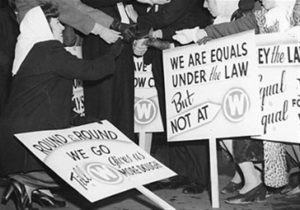 movements of the past. We need to recognize the significance of the rights and opportunities available to us, not only so we take advantage and appreciate them, but also so we protect them. It serves to show us the importance of political and social struggle and the impact that collective action can have. Furthermore, study of previous struggles that women as a group have come up against demonstrate how important equal opportunities and rights are and that they must be granted to everyone, not just a select few. In other words, the history of the women’s movement reveals why other struggles for equality should be listened to and supported. It forces us to confront our own prejudices because we learn and reflect on seemingly ridiculous prejudices of the past.
movements of the past. We need to recognize the significance of the rights and opportunities available to us, not only so we take advantage and appreciate them, but also so we protect them. It serves to show us the importance of political and social struggle and the impact that collective action can have. Furthermore, study of previous struggles that women as a group have come up against demonstrate how important equal opportunities and rights are and that they must be granted to everyone, not just a select few. In other words, the history of the women’s movement reveals why other struggles for equality should be listened to and supported. It forces us to confront our own prejudices because we learn and reflect on seemingly ridiculous prejudices of the past.
In regards to issues that affect me today, one thing that has angered me a lot is, statistically speaking, that the worst thing a woman can do for her career is get pregnant and have a baby. However, when men become fathers they are often rewarded with pay rises and promotions. I can not get over how unfair this is. It angered me so much because it is an issue that affects me on a personal level as an educated woman with big ambitions. However, something that I am keenly aware of is the privilege of my situation. I realise that globally women face much more dangerous and harmful forms of inequality and oppression. These are the forms often not talked about in western feminist discourse.
Therefore I think one of the most important issues today is that feminism needs to encompass all forms of inequality facing women of all different races, class, nationality, shape or size etc. We need to recognize that gender inequality comes in all of these variations too and combatting all of it is equally important.
Nikhil Komirisetti: There are many publicized reasons for why to study history. Truly it is wrong to point out any single reason to study history, as there are so many broad reasons and justifications for 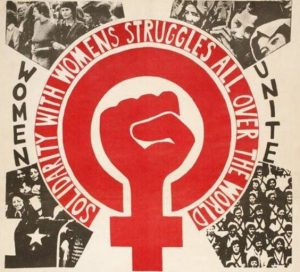 understanding the past. One personal motivation of mine was to study history so that we could understand and analyze the mistakes of the past. And in extension to this, hopefully not repeat the mistakes of the past. I have always said this and understood it as a personal motivation for studying history, but in truth it never meant much to me.
understanding the past. One personal motivation of mine was to study history so that we could understand and analyze the mistakes of the past. And in extension to this, hopefully not repeat the mistakes of the past. I have always said this and understood it as a personal motivation for studying history, but in truth it never meant much to me.
This perspective changed after I began studying the women’s movement in Europe. I am very fortunate for taking this class, as it allowed me to create deep connections between the past and the present in a way that I would have probably never been able to do otherwise. There are many ways to potentially study past women’s movements in Europe. You could look at it through a factual lens, or a critical lens, or so on. One perspective that I chose to take was looking at how issues that those movements tackled relate to issues that women are tackling today. It is extraordinarily surprising to not only how much as changed, but also how little has changed. From the movements in Germany and Britain in the early 1900s that demanded equal pay for equal work, to even earlier in the same countries that called for better working conditions for women in factories, these movements have formed a foundation for the movements of today.
Many of these same issues are fought over today, and it is almost saddening given how despite one hundred years, how little change we have seen. One aspect that this class has also emphasized is the idea of a gender hierarchy that permeates society in home, work, and social spheres. Structuring the argument for women’s movements this way is powerful, and I believe it underlies the key issue that women’s movements fight against today. Women are consistently being valued less than men. Until we tackled the gender hierarchy, there cannot be any real equality between the sexes.
Steven Potter: I believe that the history of the old and new European women’s movements matter  a great deal today. Through studying these movements and how they evolved, we will be better capable to tackle issues of injustice persisting in our society today. Remembering the great leaders and how dedicated they were to furthering their movements can give us strength and inspire us to be brave and stand up for what we believe in, no matter the odds.
a great deal today. Through studying these movements and how they evolved, we will be better capable to tackle issues of injustice persisting in our society today. Remembering the great leaders and how dedicated they were to furthering their movements can give us strength and inspire us to be brave and stand up for what we believe in, no matter the odds.
Today, the main issues of gender inequality lie in institutional disadvantaging of female employees and students. Our American society today still shows the influence of gender roles and inequality in education. Today, a female working in a STEM field is far less likely to be encouraged and aided by her superiors and peers, than a male. This is referred to in sociology as a glass ceiling. Males experience the opposite effect when working in a classically defined female career, they experience a faster promotion speed which is referred to as the glass escalator. This effect is due to the majority of company executives being men and the psychological concept that humans naturally want to aid others in succeeding when they remind them of themselves. Since most executive today are men due to past inequalities in opportunity and education, males are naturally more likely to aid other males in becoming successful.While there are many issues concerning gender equality today, I believe the most important issues are institutionalized inequalities many of which go unnoticed and unregulated continuing to perpetuate inequality.
Grayson Holmes: The history of the European women’s movement is an important subject to know today. There are few societal elements that are as impactful as gender. People identify themselves by their gender and it is a major factor of life. Men and women still have an inherent division in their genders. It is very important to know the history of gender relations and to understand how gender relations got to the way they are today.
The main issues today are sexism and inequality of gender. However, I think that this is improving and will continue to improve over time. I think the biggest issue going forward is teaching the history of women, specifically to men. Most men do not like studying this because they are not interested, they feel like a target, or they do not see its importance. But I think gender history is very important and is something that impacts our society a lot today and thus is very important to learn.
I believe women’s history gets over looked because there was no major dramatic events. If one is studying a war, there are battles, or the US civil rights movement, there was massive marches and assassinations. However, the women’s movement quietly, following many other movements and does not have the ‘wow’ factor that other historical studies do have. While this obviously does not make it any less important, it does not draw people in who do not study history.
